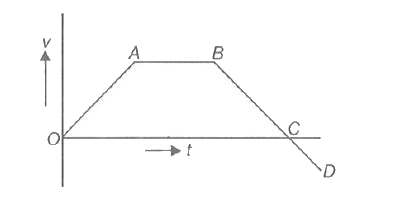STATEMENT-1: When a sphere falls under gravity or moves up due to buoyancy forces in a fluid, its velocity becomes constant after some time.
STATEMENT-2: The force of visocosity is proportional to velocity.
Statement-1 is True, Statement-2 is True, Statement-2 is a correct explanation, for Statement-1.
Statement-1 is True, Statement-2 is True, Statement-2 is not a correct explanation for Statement-1.
Statement-1 is True, Statement-2 is False.
Statement-1 is a False, Statement-2 is True.
The correct Answer is:A
Step by step video, text & image solution for STATEMENT-1: When a sphere falls under gravity or moves up due to buoyancy forces in a fluid, its velocity becomes constant after some time. STATEMENT-2: The force of visocosity is proportional to velocity. by Physics experts to help you in doubts & scoring excellent marks in Class 12 exams.
Topper's Solved these Questions
Similar Questions
Knowledge Check
- Question 1 - Select One
Some question (Assertion-Reason type) are given below. Each question contains STATEMENT-1(Assertion) and STATEMENT-2(Reason) . Each question has 4 choices (A),(B),(C ) and (D) out of which ONLY ONE is correct. So select the correct choice :
STATEMENT-1
A rain drop after falling through a certain distance attains a constant velocity.
STATEMENT-2
The viscous force for spherical body is proportional to its speed. Hence after falling through a certain distance viscous drag and buoyant forces balance the gravitational force.AStatement-1 is True, Statement-2 is True, Statement-2 is a correct explanation for Statement-1.BStatement-1 is True, Statement-2 is True, Statement-2 is NOT a correct explanation for Statement-1.CStatement-1 is True, Statement-2 is False.DStatement-1 is False, Statement-2 is True. - Question 2 - Select One
STATEMENT -1 : when an object moves towards a plane mirror with a certain velocity, its image will also move with same velocity.
and
STATEMENT - 2 : The distance from mirror to image is equal to distance of object from mirror.AStatement-1 is True, Statement-2 is True, Statement-2 is a correct explanation for Statement-10BStatement-1 is True, Statement-2 is True, Statement-2 is NOT a correct explanation for Statement-11CStatement-1 is True, Statement-2 is falseDStatement-1 is False, Statement-2 is True - Question 3 - Select One
Consider the motion of a small spherical steel body of mass m, falling freely through a long column of a fluid that opposes its motion with a force proportional to its speed. Initially, the body moves down fast, but after some time attains a constant velocity known as terminal velocity. If weight mg, opposing force (F,) and buoyant force (Fb) act on the body, then the correct equation relating these forces, after the terminal velocity is reached, is :
Amg+Fv=FbBmg+Fv−FbCmg=Fv+FbDNone
The force of buoyancy exerted by the atmosphere on a balloon is B in the upward direction and remains constant. The force of air resistance on the balloon acts opposite to the direction of velocity and is proportional to it. The balloon carries a mass M and is found to fall down near the earth's surface with a constant velocity v. How uch mass hsould be removed from teh balloon so that it may rise with a constant velocity v?
View SolutionA body falls freely under gravity and moves for n sec. Its velocity after n sec is "V" .The displacement of the body in the last 3 sec is
View SolutionSTATEMENT -1 :The force acting on a particle moving alongx -axis is F=−α(x+vt), where α is a constant.
and
STATEMENT-2 : To anobserver moving along x-axis with constant velocity v, it represents SHM.View SolutionA small spherical ball falling under gravity in a viscous medium heat the medium due to viscous drage force. The rate of heating is proportional to rn. (r= radius of the sphere find )n.
View SolutionA particle moving with initial velocity 4m/s decelerate at a constant rate of 2ms2 .Time after which its velocity becomes zero is ?
View Solution


